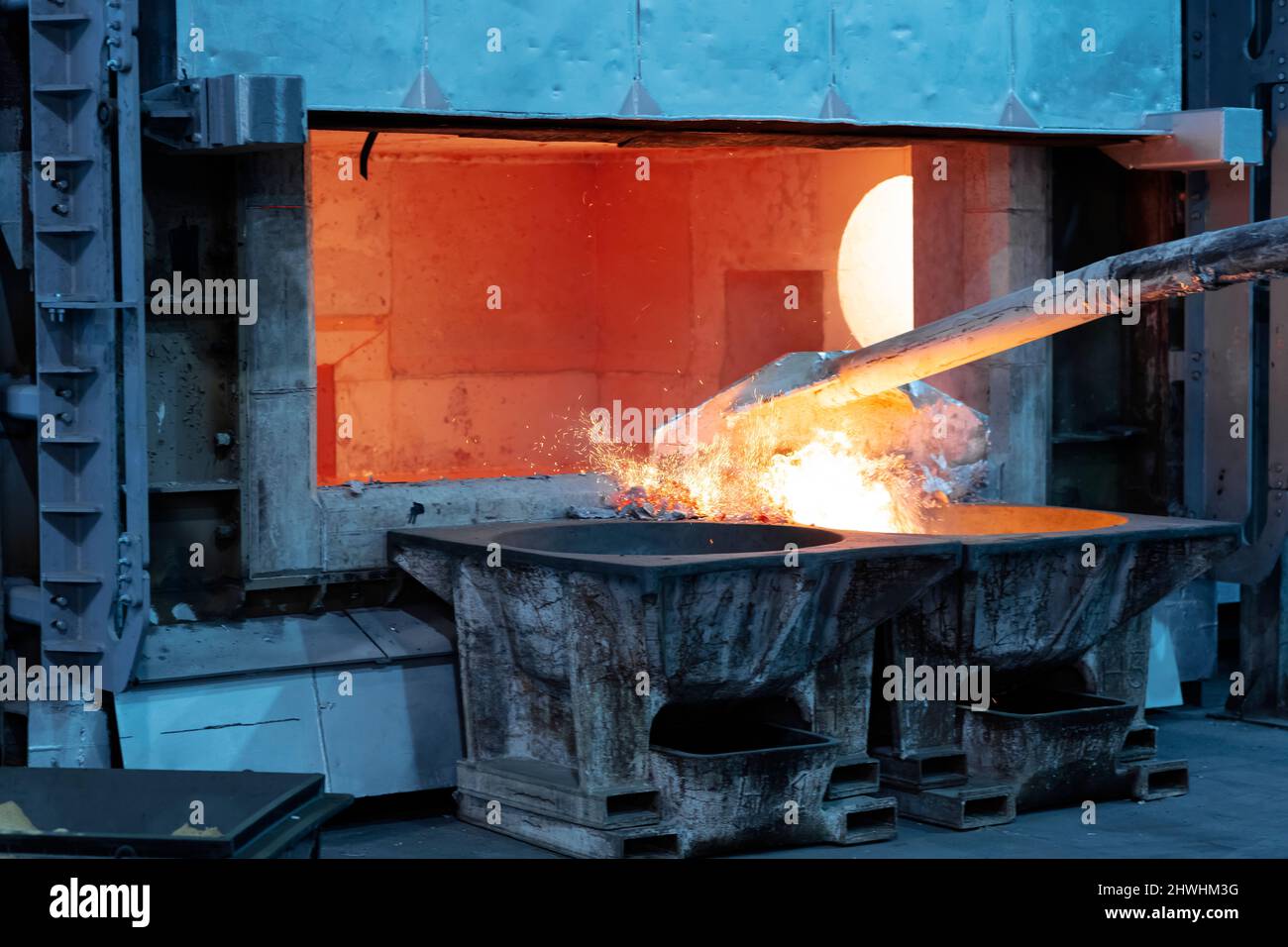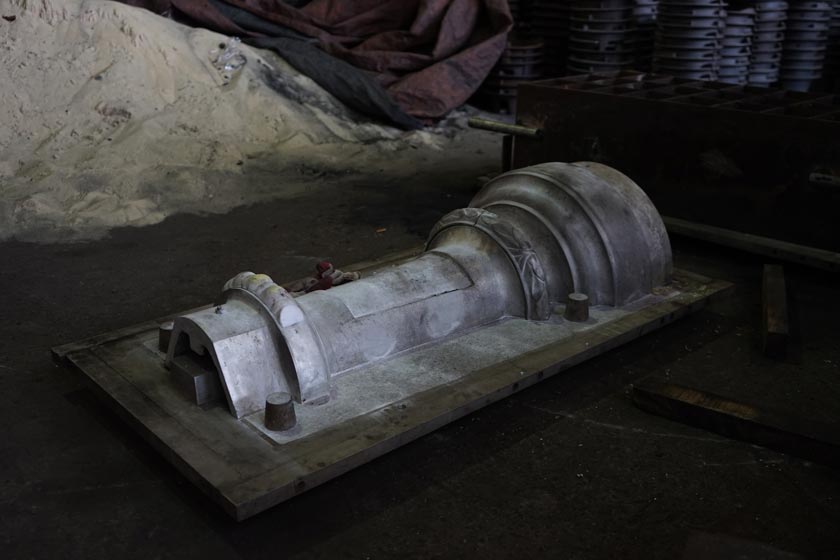Aluminum Foundry Wisconsin ensures strong casting performance
Wiki Article
Just How Aluminum Foundry Adds To Improvements in Aerospace Design
Aluminum factories are important to developments in aerospace design. They produce light-weight, high-strength components that are necessary for modern aircraft. Through innovative casting methods, these foundries develop complicated geometries that improve structural honesty. Additionally, the growth of premium Aluminum alloys supports the sector's emphasis on fuel efficiency and sustainability. However, obstacles stay in the production process. Understanding these elements reveals the profound effect of Aluminum on aviation's future.The Importance of Lightweight Products in Aerospace Layout
As the aerospace market proceeds to evolve, the value of lightweight materials ends up being increasingly noticeable. The demand for performance and sustainability drives engineers to prioritize using products that minimize general weight without endangering structural stability. Light-weight products, specifically Aluminum, play a crucial role in improving fuel performance, boosting payload capability, and enhancing the overall performance of aircraft.In addition, the assimilation of these products allows for innovative styles, enabling manufacturers to produce even more aerodynamic forms that can withstand severe problems. The decrease in weight not only reduces functional prices yet additionally contributes to a lowered ecological impact, straightening with global efforts towards sustainability in aviation.
Advanced Casting Techniques in Aluminum Foundries
Advanced casting techniques in Aluminum shops play a vital duty in aerospace engineering by enabling the production of exact and lightweight elements. Technologies in mold and mildew design and accuracy spreading processes are necessary in attaining excellent efficiency and structural honesty. Additionally, the development of lightweight alloys enhances the total efficiency and effectiveness of aerospace applications.Ingenious Mold Design
Innovative mold layout plays an essential function in the effectiveness and performance of Aluminum shops, especially within the aerospace market. By leveraging sophisticated materials and techniques, modern-day mold and mildews can be engineered to hold up against high temperature levels and pressures, making certain peak efficiency during the casting procedure. These designs typically incorporate complicated geometries that enable for the production of light-weight yet structurally audio components, necessary for aerospace applications. Additionally, using computer-aided layout (CAD) software application promotes precise modeling, making it possible for factories to improve and simulate mold layouts before physical manufacturing begins. This not just boosts the quality of cast parts however additionally lowers waste and lead times, causing substantial expense financial savings. In general, innovative mold and mildew layout is a keystone of progress in Aluminum Foundry technology for aerospace design.Accuracy Casting Procedures
The performance of cutting-edge mold and mildew designs seamlessly integrates with precision casting processes, which are necessary for generating top quality Aluminum elements in aerospace engineering. These procedures, consisting of sand casting, die casting, and investment spreading, assure the creation of complex geometries with limited resistances. Advanced strategies like vacuum cleaner spreading and stress die casting improve the stability and surface area coating of the end products. Accuracy spreading lessens material waste while maximizing the mechanical residential properties of Aluminum, important for aerospace applications. Additionally, utilizing real-time tracking and progressed simulation tools during the spreading procedure enables for prompt modifications, causing improved quality assurance. Jointly, these precision spreading procedures setting Aluminum foundries at the leading edge of aerospace advancement, supporting the sector's need for reliability and performance.Lightweight Alloy Development
As aerospace designers look for to enhance fuel efficiency and efficiency, lightweight alloy advancement becomes an important emphasis in Aluminum foundries. These shops utilize advanced spreading techniques to develop alloys that provide premium strength-to-weight ratios. Advancements in alloy composition, consisting of the incorporation of components like lithium and magnesium, allow the manufacturing of materials that hold up against extreme problems while decreasing total aircraft weight. Methods such as die casting and financial investment spreading assist in the accuracy manufacturing of complicated forms, which are crucial for aerospace applications. In addition, ongoing research study intends to optimize these alloys for enhanced mechanical residential properties and raised toughness. By focusing on lightweight alloy advancement, Aluminum foundries considerably add to the evolution of aerospace design, leading the way for much more effective and lasting aircraft styles.
Enhancing Architectural Honesty Via Aluminum Elements
Aluminum components offer significant benefits in boosting architectural honesty within aerospace design. Their light-weight nature adds to total performance while keeping stamina, which is necessary for airplane efficiency. Additionally, the tension resistance properties of Aluminum assistance assure the sturdiness and integrity of aerospace frameworks under numerous functional conditions.
Light-weight Material Advantages
While traditional products typically jeopardize weight for toughness, using Aluminum elements in aerospace design uses significant benefits in structural stability. Aluminum's lightweight nature adds to general design performance, permitting even more streamlined airplane that consume much less fuel, consequently improving sustainability. The product's exceptional strength-to-weight proportion assurances that components preserve resilience without including unnecessary mass. This quality fosters improved efficiency and agility in flight, along with maximized payload abilities. Additionally, Aluminum's resistance to rust prolongs the life expectancy of aerospace frameworks, decreasing upkeep costs and improving safety and security. As producers significantly adopt Aluminum alloys, the aerospace sector experiences a transformative shift in the direction of more efficient and efficient engineering options that focus on both efficiency and environmental responsibility.Anxiety Resistance Qualities
Although various products have distinct residential or commercial properties, Aluminum's phenomenal stress resistance sticks out as an essential consider enhancing the structural integrity of aerospace elements. This resistance plays a vital role in making sure that airplane can stand up to numerous functional tensions, including fatigue, impact, and environmental problems. Aluminum alloys, especially crafted for aerospace applications, show high tensile stamina while preserving lightweight qualities, enabling engineers to design more reliable frameworks - Aluminum Foundry. Furthermore, the capability of Aluminum to withstand cyclic loading without substantial deformation adds to the longevity and integrity of aerospace parts. As improvements continue in Aluminum Foundry methods, the advancement of stress-resistant Aluminum elements guarantees further improvements in efficiency, safety, and efficiency throughout the aerospace industry, strengthening Aluminum's function as a preferred product in contemporary designFuel Efficiency Improvements Driven by Aluminum Innovations
As the aerospace industry seeks to boost fuel efficiency, cutting-edge uses of Aluminum have actually become a crucial option. Aluminum's lightweight nature especially decreases airplane weight, allowing for lower gas consumption throughout flight. This decrease in weight is important, as also tiny decreases can bring about considerable renovations in overall gas economic climate.Advanced Aluminum alloys, designed for improved strength and toughness, allow manufacturers to produce parts that maintain structural stability while minimizing mass - Aluminum Foundry. Furthermore, the integration of Aluminum in airframes and engine elements facilitates enhanced the rules of aerodynamics, adding to reduced drag and boosted efficiency
The adoption of Aluminum in aerospace not only fulfills the need for fuel-efficient layout but additionally straightens with regulatory pressures for reduced exhausts. As these advancements remain to evolve, they play a substantial duty in setting brand-new standards for fuel effectiveness, ensuring that the aerospace industry can fulfill expanding economic and ecological challenges.

The Function of Aluminum in Sustainable Air Travel Practices
The boosting emphasis on sustainable aviation techniques has actually placed Aluminum as an essential material in the pursuit for greener airplane layout. Understood for its lightweight homes, Aluminum significantly decreases aircraft weight, leading to reduced gas intake and emissions. Its recyclability further improves its sustainability account, as Aluminum can be recycled indefinitely without loss of top quality. This particular supports a round economic situation within the aviation field, lessening waste and resource deficiency.Moreover, innovations in Aluminum alloys have actually improved their toughness and deterioration resistance, enabling for longer life span and minimized maintenance demands. These advancements help with the development of a lot more efficient airplane structures, adding to overall sustainability initiatives. Additionally, Aluminum's thermal conductivity plays an essential duty in energy-efficient layouts, improving systems such as warm exchangers. Collectively, these qualities underscore Aluminum's critical role in progressing sustainable aeronautics, aligning with worldwide campaigns targeted at lowering the environmental effect of air travel.
Difficulties Faced by Aluminum Foundries in Aerospace Production
While Aluminum foundries play a find this vital role in aerospace production, they encounter significant difficulties that can impact production effectiveness and top quality. One major difficulty is the stringent high quality control criteria needed in the aerospace sector. Any type of problem can endanger safety and efficiency, necessitating strenuous inspection procedures that prolong production timelines. In addition, foundries usually emulate changing raw material prices, which can affect pricing and productivity. The complexity of Aluminum alloys utilized in aerospace applications more makes complex the production procedure, as specific formulations are important for attaining wanted mechanical buildings. Additionally, experienced labor scarcities impede the capability to preserve high-grade manufacturing levels. Finally, ecological policies impose restrictions on emissions and waste management, requiring foundries to purchase lasting methods, which can be cost-prohibitive. These aspects jointly produce a landscape where Aluminum foundries have to continually adapt to meet the evolving needs of aerospace manufacturing while guaranteeing safety and site conformity.Future Patterns in Aluminum Applications for Aerospace Engineering
With developments in technology and boosting demands for performance, the future of Aluminum applications in aerospace engineering is positioned for significant transformation. The integration of ingenious Aluminum alloys and compounds is expected to boost strength-to-weight ratios, leading to even more fuel-efficient airplane designs. In enhancement, developments in additive production methods will enable the manufacturing of complicated Aluminum structures that were previously difficult, optimizing efficiency and lowering waste.
Sustainable practices will certainly play a vital duty, with an expanding emphasis on recycling Aluminum to lessen ecological influence. The aerospace sector is likely to accept smarter producing processes, such as automation and fabricated knowledge, guaranteeing higher high quality and precision in Aluminum components. Additionally, collaborations between Aluminum foundries and aerospace companies will foster research study and growth, leading the way for brand-new applications that satisfy the rigid needs of contemporary aerospace engineering - Aluminum Foundry. On the whole, the future looks promising for Aluminum's function fit the skies
Regularly Asked Concerns
What Are the Ecological Effects of Aluminum Production in Aerospace?
The ecological effects of Aluminum production in aerospace include considerable energy intake, greenhouse gas exhausts, and habitat disruption. In addition, mining procedures can result in dirt destruction and water contamination, increasing issues about sustainability and eco-friendly balance.How Does Aluminum Contrast to Other Materials in Aerospace Applications?
Aluminum supplies an one-of-a-kind mix of light-weight properties, deterioration resistance, and cost-effectiveness contrasted to other products. Its high strength-to-weight proportion makes it particularly advantageous for aerospace applications, boosting fuel efficiency and overall efficiency in airplane style.What Certifications Do Aluminum Foundry Workers Demand for Aerospace Projects?
Aluminum Foundry workers require specific training in metallurgy and spreading strategies, along with expertise of aerospace industry standards. Accreditations in top quality control and security protocols are likewise important to ensure compliance with strict aerospace task requirements.Exist Any Kind Of Safety Worry About Using Aluminum in Aerospace Engineering?
Safety and security concerns relating to Aluminum in aerospace design consist of vulnerability to tiredness, rust, and stress and anxiety cracks. Correct therapy and alloy option are vital to alleviate these threats, making certain structural integrity and total security in aerospace applications.Exactly How Does Aluminum Recycling Benefit the Aerospace Market?
visit this website Aluminum recycling substantially profits the aerospace market by minimizing product expenses, lessening ecological effect, and saving energy. This sustainable practice enhances the sector's performance while advertising the usage of lightweight, high-performance elements in aircraft manufacturing.Advanced spreading strategies in Aluminum shops play a crucial duty in aerospace design by making it possible for the manufacturing of accurate and lightweight elements. Cutting-edge mold and mildew style plays an important function in the effectiveness and efficiency of Aluminum factories, especially within the aerospace market. As aerospace designers look for to improve fuel efficiency and efficiency, lightweight alloy growth ends up being a necessary focus in Aluminum shops. Aluminum alloys, particularly engineered for aerospace applications, show high tensile toughness while maintaining lightweight qualities, enabling designers to create much more efficient frameworks. Collaborations in between Aluminum factories and aerospace firms will cultivate research and growth, paving the means for new applications that satisfy the strict needs of contemporary aerospace design.
Report this wiki page